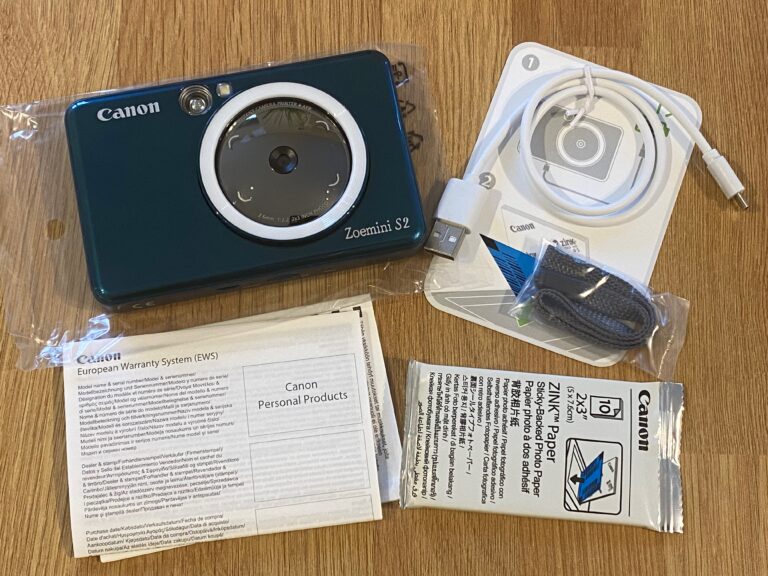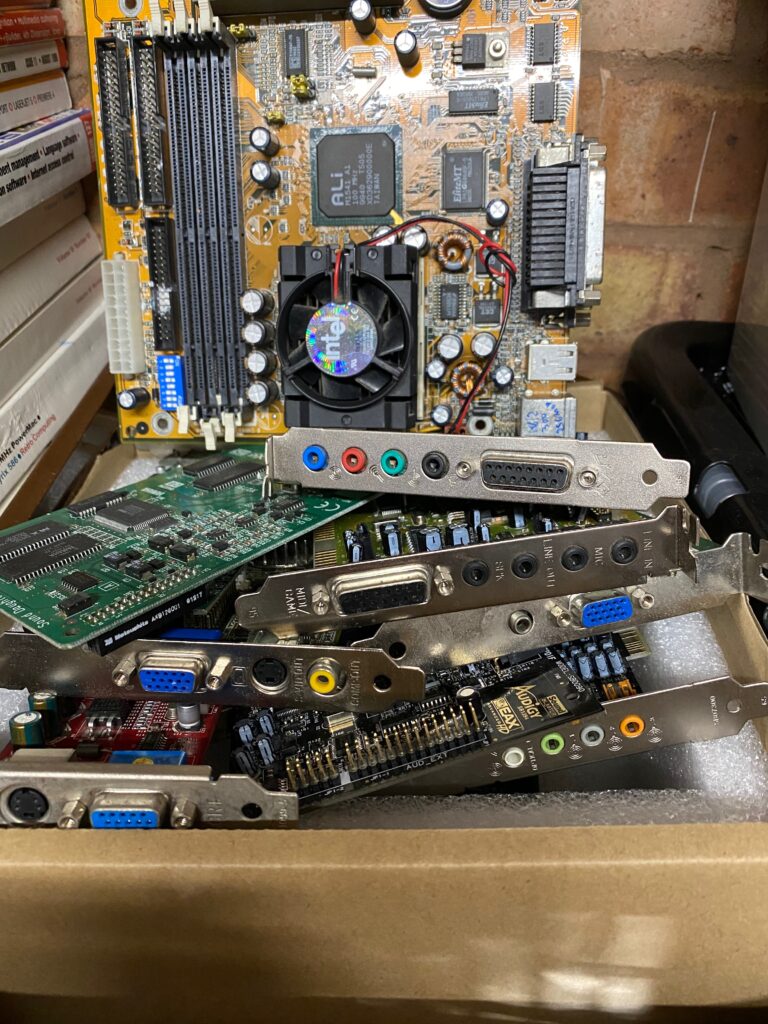One of the biggest problems with the WWW and using it for research is the all too common use of a single source of information, which is then repeated by site after site until its ubiquity alone makes something a fact. We should never take anything we read online as fact, especially without first doing a little digging, looking at the quality of the source in question and then going a step further – seeing if you can find anything which actually backs a claim up.
In the case of the Nikon EM there is a persistent repetition of this being marketed (note the emphasis on that word) as a camera for women. People take this as such a gospel truth as to get very angry about the matter and to rant about “different times” and how its a good thing this kind of behaviour is no longer acceptable. There absolutely was a time when this kind of marketing was acceptable – indeed we’ve been here before with the Canon Demi which openly and regularly was advertised as “even operating expertly in your wife’s hands.”
So what is the problem, then? Nikon sold this as a camera for women and that’s unacceptable today. Case closed? Well, yes, absolutely but for one small problem.
It’s just not true.
- It must be true, it’s on Wikipedia!
- Woah there, it says “designed” on the Nikon site!
- You decide for yourself
- A bonus review?
- Is it any good?
- Conclusions and Learning
It must be true, it’s on Wikipedia!
The claim about the EM being a women’s camera (I cannot stop thinking about the episode of Blackadder where Redbeard tells him he has a woman’s purse) is repeated again and again and again. Even the gospel that is Wikipedia copies the claim. I doff my cap to the sensible people at Nikonians for not going down this road.
If it’s on Wikipedia, though, it must be true! They have to reference everything! But where does this information come from? Where did everyone get this idea about the Nikon EM?
Yes, about that reference… Where do you think the one single source might be? Actually, it turns out it is Nikon themselves.
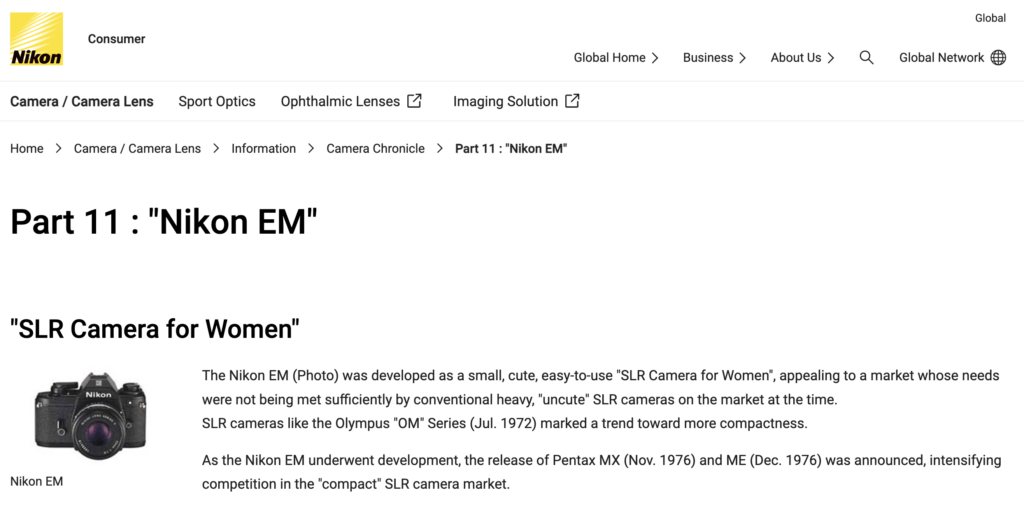
https://imaging.nikon.com/imaging/information/chronicle/cousins11-e/
Have I lost the plot here? It’s there in black and white on Nikons own site.
Only this isn’t written by Nikon and nor was it written in English. The claim comes from a publication called Nikkon Club Quarterly, written in Japanese – visit their website and you’ll get a translated version. There are several issues here:
- These quotes have no source
- The original article they came from can’t be found
- There is meaning lost in translation
- This is an abridged and badly written summary of an original piece written by an unknown and unattributed author
- No one has actually taken the time to scroll down the page and read past the first paragraph (more on this shortly)
Perhaps, you could argue, that I’m just plain wrong here. That the person who wrote the article for Nikkon Club Quarterly is an expert on the matter. That would indeed be a strong case if it wasn’t for the fact that there isn’t a single bit of evidence in the marketing of this camera that mentions women nor is particularly targeted to women.

I’ve searched print media, advertisements, tv adverts and found absolutely no evidence nor mention whatsoever of this deliberate or even subtle female angle. In fact, the truth of the matter is that the EM was actually sold as the most affordable and automated entry route into the Nikon ecosystem. Nothing, I repeat nothing at all about being “for women.”
Woah there, it says “designed” on the Nikon site!
It does, doesn’t it. Yet there are countless reviews of the EM which have changed the word designed to “sold as” and “marketed as” with absolutely no evidence of this being the case.
What’s more telling, though, is the fact that very Nikon page goes on to contradict such claims itself:

The final design moved away from the initial camera for women idea. Oh dear. Notice, by the way, the very informal writing style of this page – hardly that of a proof read corporate release like you’d perhaps find on the Canon Camera Museum, for example. There are so many holes in this article that it makes my brain hurt.
If there is to be a shred of truth in this “for women” claim, then it is purely this:
It is entirely possible that the design brief and initial plans were indeed for a camera aimed at women. However, there is subsequently no mention of this upon release nor any evidence of this in any marketing material. Indeed, quite the opposite, this camera was launched and heavily advertised as the “low cost and easy to use” Nikon for everyone.
Ravioli themed author.
You have to be careful here. If you think for one second that products being aimed at women in their design phase is “deplorable sexism” then you are, I would suggest, mad as a box of frogs. This is pretty basic GCSE Business Studies stuff – in order for a product to be successful you must have a tightly defined target market. If your product so happens to be designed for women to use whether biologically, ergonomically or aesthetically then you have to, by definition, display such deplorable sexism – it’s the whole point. Your product will fail if you don’t, because… it won’t be suitable for your target audience.
To be clear, I am not condoning the type of marketing which absolutely did used to exist for products aimed at women where it was something along the lines of “there there, look how simple she is! Perhaps the adorable lady would like a new hoover for Christmas.” No one has a problem with us leaving those days behind, there is no need to belittle based on gender, however there is absolutely a need to target and deliberately identify women if thats who your product is being designed for.

You decide for yourself
I shall leave this section of the article with a selection of adverts for the Nikon EM. You decide for yourself if you really think this was a case of “you have a woman’s camera, my Lord” or “This is an entry level camera built to a budget.”
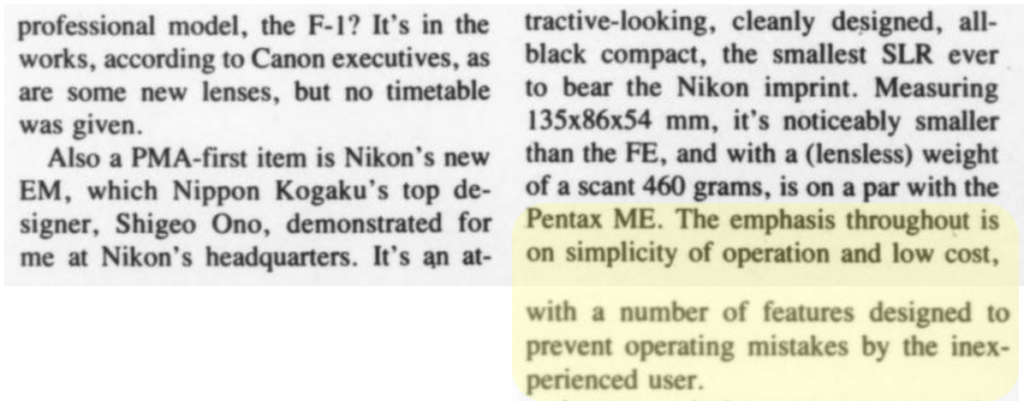



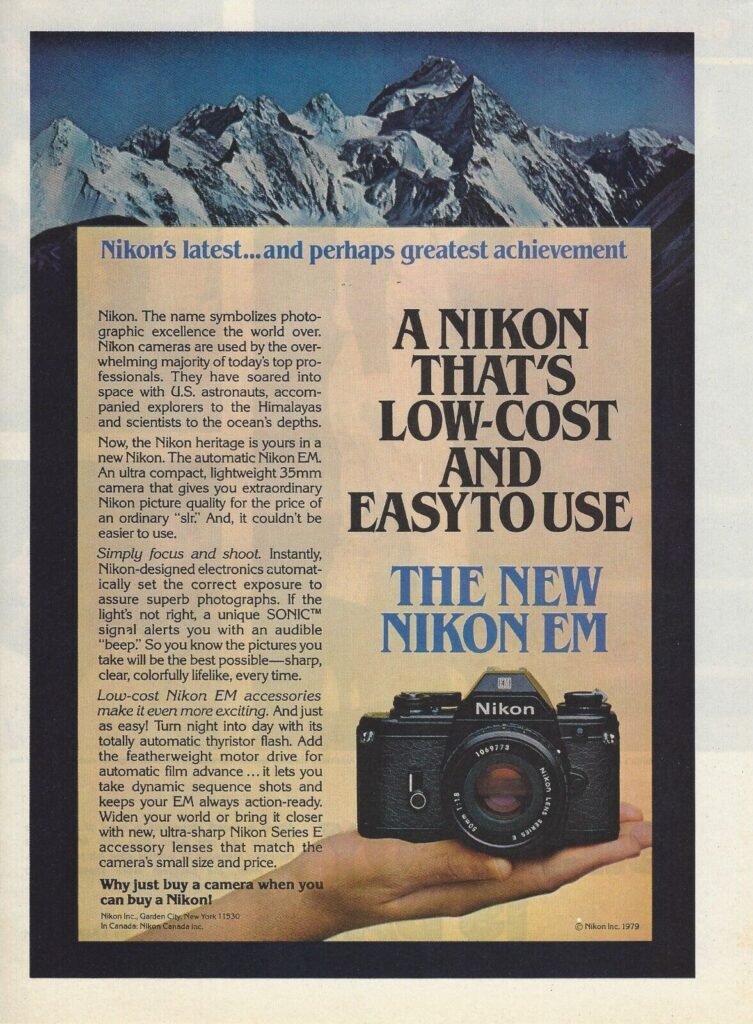
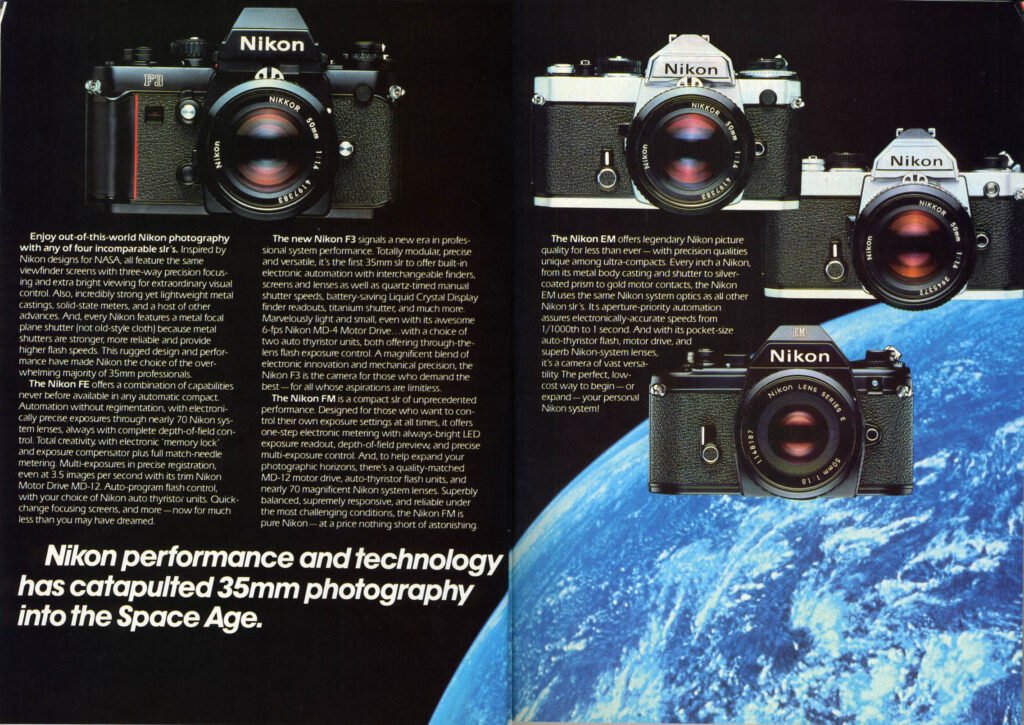
The evidence base goes on. Feel free to do some searching yourself, you will not find one single mention, hint at nor reference to this being a woman’s camera. Whilst one source may have suggested this to be the case, the evidence points to a completely different story that not one single author has seen fit to check for themselves. This camera was never, ever marketed as a camera for women, yet this claim is repeated nearly everywhere you look. This, my friends, is the danger of the copy and paste mentality that exists in internet land.
Stop believing the first thing you find on Google, and certainly don’t believe AI generated summaries.
A bonus review?
I had no intention of doing a literature review of the Nikon EM, it was a side effect of being given one by a friend who found it in their loft during a clear out. It had been extremely well looked after and was preserving a roll of colour film too which would’ve been brilliant to develop.
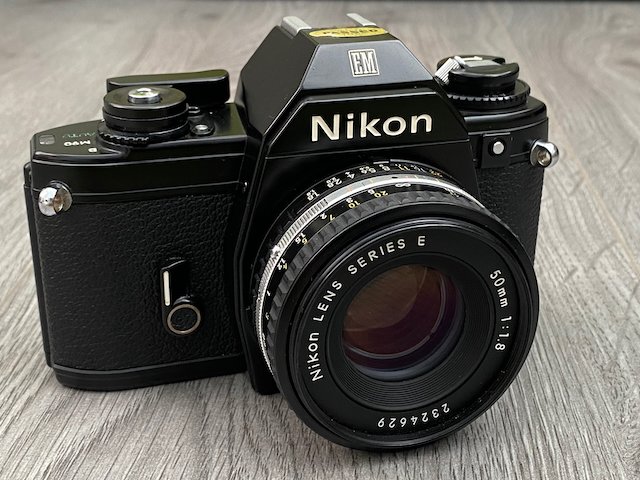
Other than suffering from the inevitable crumbling, sticky light seals and mirror dampener, it was in remarkably good shape. The meter batteries had started to explode from old age but in a real stroke of good fortune, they had welded themselves together rather than to the camera or contacts. Simply removing them and replacing with new cells did the trick and the EM sprang instantly to life again.
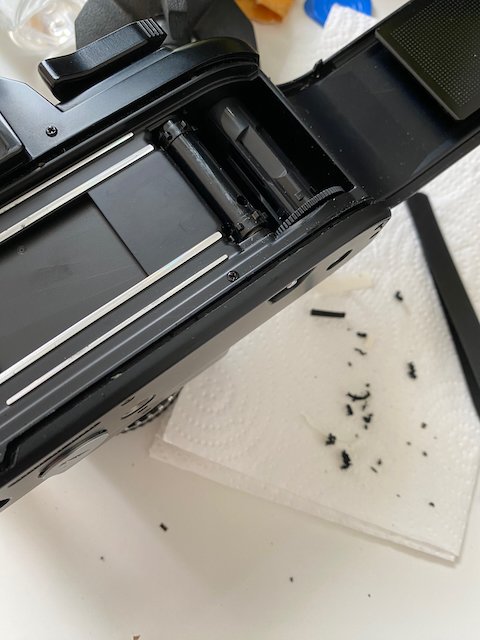
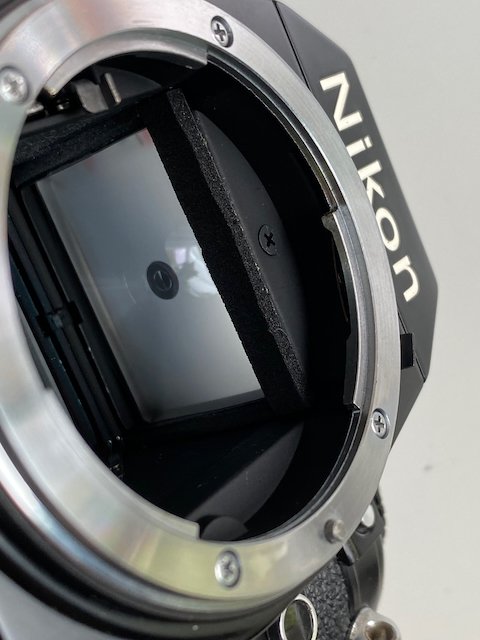
One nice thing about old cameras, the EM being a 1979 vintage, is they are much easier to repair and maintain. This body had dirt underneath the focussing screen and a single screw was all that needed to be removed in order to take the whole assembly out for cleaning. The viewfinder is now crystal clear once more.
Functionally, there isn’t a lot to say about the EM that hasn’t been said before. It is as close to a point and shoot SLR as it was possible to get back then. To use, simply set the F stop on the lens, in my case I pretty much left it at F8 and then half press the shutter. If you hear a beep you’re going to be under or over exposed so change the F stop. That’s it.
I loaded mine with a roll of, frankly awful, Kentmere 400 film and took it out for a test. On a side note, I really don’t know what Ilford were thinking with Kentmere 400, it produces the most washed out, bland images I’ve seen from any black and white film and throws in an absolute ton of grain on top. Compared with HP5, Delta or Foma films, this is just plain terrible. Trying to get contrast and detail out of it is an almost impossible task. When the last roll has fallen out of my fridge and into a test camera, it shall be the last I ever use.
Is it any good?

The EM is a game of two halves. I really enjoyed using it and the beeping exposure warning is actually quite a handy feature when using a fit-and-forget camera like this. I do have a bias for cameras like this, pretty much anything with manual film advance gives me the “this is a proper camera” experience. Nikon certainly achieved their objective of creating a camera that you only have to worry about focussing.
On the other hand, the resulting images are less than spectacular. I had more difficulty confirming focus with the EM than I have ever done with similar cameras. Furthermore, the metering is not spectacular and for a camera designed to be just pointed at things, that’s not great. The EM struggles with backlit scenes especially – and Nikon knew this, they added a button at the front which will change the exposure for exactly these kind of composures but would the poor, helpless women amateurs this was aimed at remember to press it?
Every now and again the meter seems to weight the sky slightly too highly, despite it not taking up a great deal of the frame as shown in the shot below which is dominated by shadow areas yet has been exposed for the small amount of sky above.

Nikon EM, 50mm F1.8 at F8. Kentmere 400, Rodinal 1:50 for 17 minutes

Conclusions and Learning
The Nikon EM is a camera that I wanted to love and did genuinely enjoy shooting a roll of film through. Ergonomically it’s a very pleasing camera to use and the film wind action is really well thought out. However, the difficulty in achieving decent focus spoiled the experience for me. Compared to something like the Canon T90 or even AE-1 Program, the focus screens on those cameras are in another world compared to the Nikon EM. I’m not an expert in focussing screens and I’ve no idea what they did wrong, but this is the first time I’ve ever had so many slightly out of focus shots from a camera.

You can definitely achieve good or pleasing images from the EM, it’s just that they’re not as consistent as you might like. I think its easy to be critical in retrospect, this was a great camera for the period in which it was released. However, spoiled for choice as we are today, there are plenty of other bodies out there that will give you the automation (if that’s what you want) and will come with better meters, better lenses and all for the same or a similar price.
But one thing is for sure. This isn’t, and never was, a woman’s camera.
Share this post:



